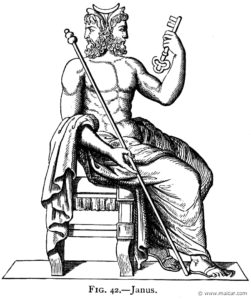Perhaps a conceptual consensus needs to be continually challenged in order to stay healthy.
Arthur Koestler (Barlow 1991, 97) says that ‘when the organism or body social is functioning steadily, the integrative and self-assertive tendencies are in a state of dynamic equilibrium – symbolized by Janus Patulcius, the Opener, with a key in his left hand, and Janus Clusius, the Closer, jealous guardian of the gate, with a staff in his right.’ A ‘state of dynamic equilibrium’ would be contradiction in terms if it didn’t refer to a continuous interplay of two opposing tendencies. This ‘state of equilibrium’ is one manifestation of the requirement for a living organism to maintain itself ‘far from equilibrium’ (Prigogine) where ‘equilibrium’ would mean the entropic state devoid of all energy flow.
The consensual model constructed by a culture or society is referred to by Berger and Luckmann (1966) as ‘the symbolic universe.’ The culture maintains itself by making sure that its members see this universe as a ‘reality’ prior and external to their practice; and much of their practice goes to maintaining this virtual reality (or this illusion, as an alien observer might call it). But if the culture succeeds too well in closing its universe to actual realities or new information, it begins to die of self-suffocation.